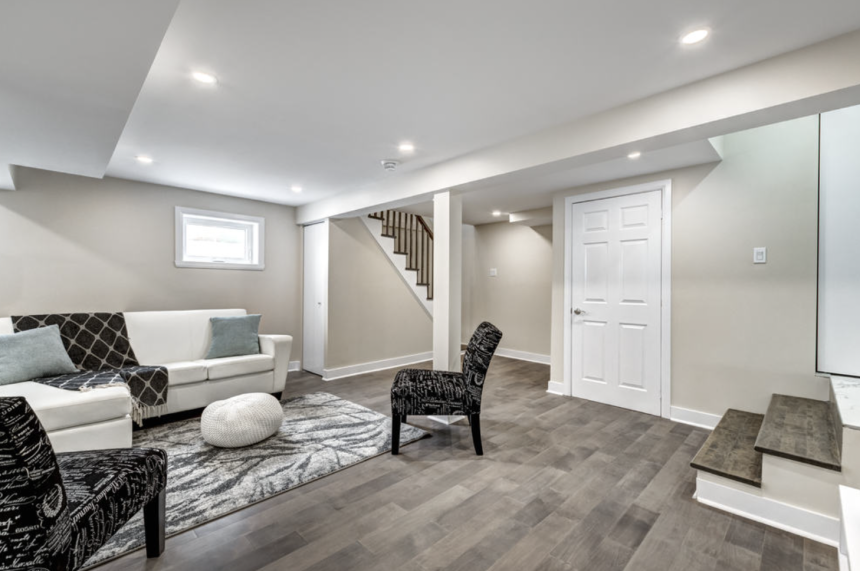Ever wondered how basement underpinning in Hamilton could transform your home? Imagine creating more living space or increasing property value effortlessly. With our expert tips and insights, you’ll uncover the secrets to a successful underpinning project. From understanding the process to finding the right professionals, we’ve got you covered. Say goodbye to cramped spaces and hello to a whole new world beneath your feet. Ready to unlock the full potential of your basement?
Assessing Basement Space
To begin assessing basement space, measure the area accurately to understand its dimensions for planning. Ensure to account for any irregularities in the layout.
Consider creating a bullet list of measurements for each section of the basement, including ceiling height, width, and length. This detailed approach aids in visualizing potential layouts effectively.
Identify Structural Issues
Inspect the basement thoroughly to identify any existing structural issues or damage that may impact future renovations. Look out for signs of water damage, cracks in walls, or uneven floors.
Create a bullet list of identified issues to prioritize repairs before proceeding with any renovation plans. Addressing structural concerns early prevents further damage and ensures a safe living space.
Explore Functionality
When considering additional functionalities for the basement, think about how the space can be optimized for various purposes such as a home office, entertainment area, or guest suite. Evaluate the feasibility of each idea based on the available space.
Generate a list of possible functionalities based on your needs and preferences. This proactive approach helps in envisioning the basement’s transformation into a versatile and livable area.
Inspecting Construction Quality
When inspecting construction quality for basement underpinning in Hamilton, it is crucial to check the foundation thoroughly. Look for cracks or signs of instability that may indicate potential issues. Ensure that the foundation meets building codes and is structurally sound.
Wall and Floor Assessment
Assess the quality of existing walls and floors to determine their condition. Look for any weaknesses or damages that could affect the overall stability of the basement. Verify that the materials used, such as concrete, meet the required standards.
Water Damage and Mold Check
Inspect the basement for any water damage or mold growth. Addressing these issues is crucial to prevent further damage and ensure a safe environment. Check if there are any leaks or moisture problems that need immediate attention.
Installing Essential Systems
When installing essential systems in your basement, plan the layout meticulously:
- Map out the placement of plumbing and electrical systems for optimal functionality and efficiency.
- Consider the placement of windows for natural light and ventilation, including egress windows for safety and emergency exits.
- Install a sump pump for water management to prevent flooding and water damage.
- Select a sump pump that suits the size and needs of your basement; ensure proper installation and maintenance.
- Proper insulation is crucial for regulating temperature in your basement:
- Insulate walls and floors to minimize heat loss in colder months and reduce cooling costs in warmer seasons.
- Use insulation materials suitable for basements, such as foam board insulation or spray foam insulation, for excellent thermal resistance and moisture control.
- Investing in quality insulation improves comfort and adds value to your property.
More information can be found on our website: https://willfix.ca/basement-underpinning-hamilton/
Moisture and Insulation Solutions
Address any existing moisture issues in your basement by implementing effective waterproofing solutions. This process involves sealing cracks, applying waterproof coatings, and installing drainage systems to prevent water seepage.
Proper moisture protection is crucial to maintain a dry and healthy basement environment. By addressing moisture issues promptly, you can prevent mold growth, structural damage, and musty odors. Consider consulting with a professional to assess the extent of the moisture problem and determine the most suitable waterproofing methods.
Insulation Installation
To enhance energy efficiency and prevent heat loss in your basement, it is essential to install proper insulation. This helps regulate the indoor temperature, reduce energy costs, and create a more comfortable living space. Choose insulation materials that are specifically designed for basements to maximize effectiveness.
Insulating your basement walls and floors can significantly improve the overall thermal performance of your home. By reducing heat transfer through the foundation, you can create a more stable indoor climate and minimize fluctuations in temperature. Proper insulation also helps protect against moisture infiltration and dampness.
Ventilation Options
Consider exploring different ventilation options to enhance air circulation and reduce humidity levels in your basement. Adequate ventilation is essential to prevent condensation buildup, which can lead to mold growth and other moisture-related issues. Installing vents, fans, or dehumidifiers can help maintain optimal air quality and reduce the risk of humidity problems.
Improving ventilation in your basement not only promotes better air quality but also enhances overall comfort and livability.
Proper airflow helps prevent stagnant air, musty odors, and allergen accumulation. By incorporating effective ventilation solutions, you can create a healthier environment for you and your family to enjoy.
Enhancing Basement Safety
Install smoke and carbon monoxide detectors in your basement to ensure early detection of any potential hazards. These detectors are crucial for alerting you to fires or gas leaks, providing valuable time for evacuation.
Proper installation and regular maintenance of these detectors are essential to their effectiveness. Check the batteries regularly and replace them as needed. Consider interconnected alarms throughout your home for comprehensive coverage.
Egress Windows
Ensure that your basement has proper egress windows to serve as emergency exits in case of fire or other emergencies. These windows provide a safe means of escape and allow emergency personnel to enter if needed.
Egress windows must meet specific size requirements outlined by basement building codes to ensure they are large enough for easy exit and entry. Regularly check these windows to ensure they open easily and are not blocked by any obstructions.
Handrails and Lighting
Secure handrails along staircases in your basement to prevent falls and provide support when going up or down the stairs. Proper handrails should be sturdy, securely mounted, and easy to grip.
Adequate lighting is crucial in basements, especially those with tight spaces. Ensure that all areas are well-lit to prevent accidents and make navigation easier. Consider installing motion-sensor lights for added convenience and energy efficiency.
The Final Word
You’ve learned how to maximize your basement space, ensure construction quality, and enhance safety. By installing essential systems, addressing moisture issues, and focusing on insulation, you’re creating a functional and comfortable living area. Remember to prioritize lighting, ventilation, and those final touches for ultimate comfort and usability. Protect your investment by taking these steps seriously and transforming your basement into a valuable part of your home.
Take action now to implement these strategies and turn your basement into a space that adds both practicality and value to your property. Your efforts will not only enhance your daily living but also increase the overall appeal and worth of your home. Make the most of your basement with these tips!
Lynn Martelli is an editor at Readability. She received her MFA in Creative Writing from Antioch University and has worked as an editor for over 10 years. Lynn has edited a wide variety of books, including fiction, non-fiction, memoirs, and more. In her free time, Lynn enjoys reading, writing, and spending time with her family and friends.















